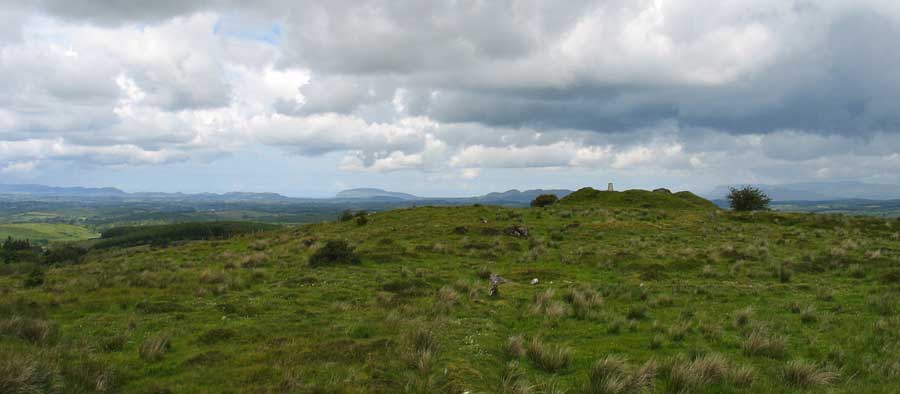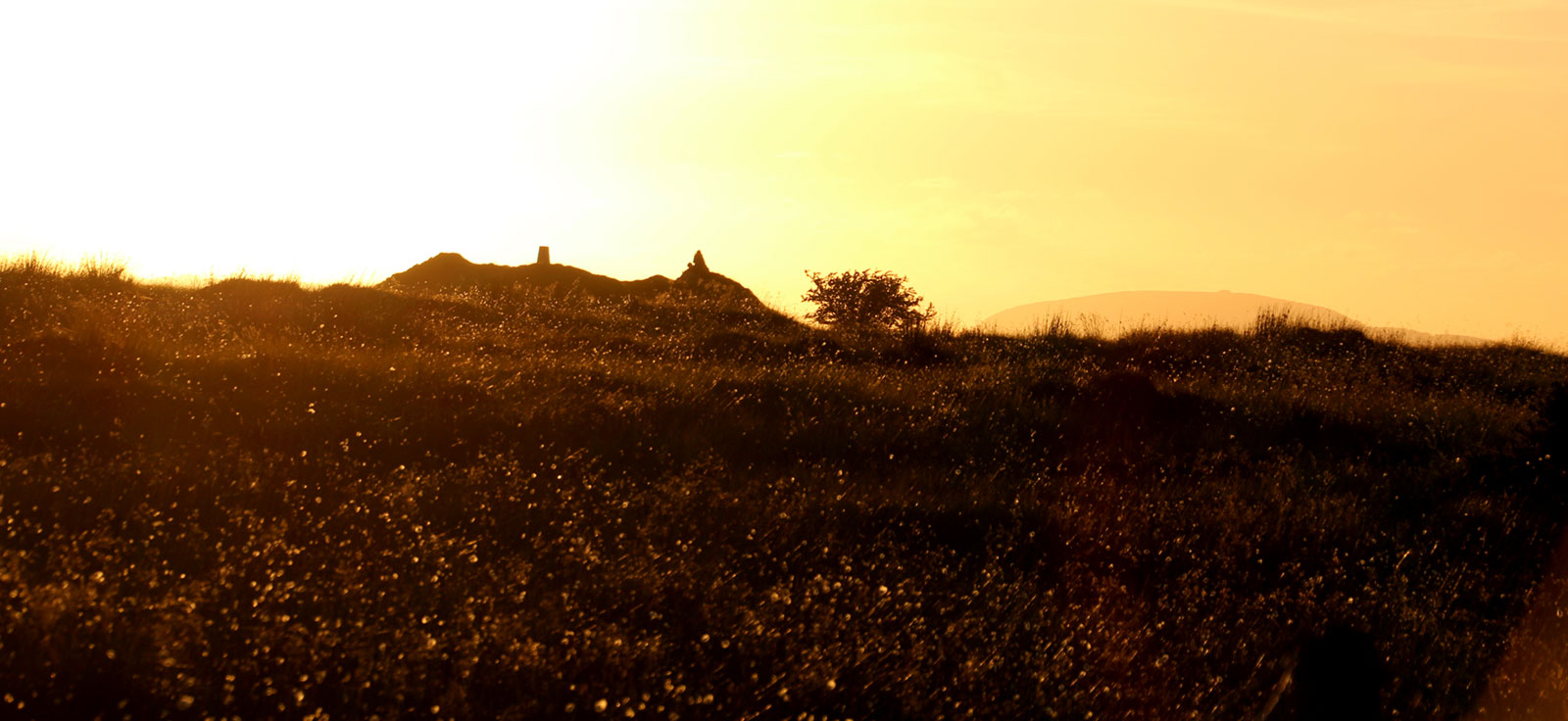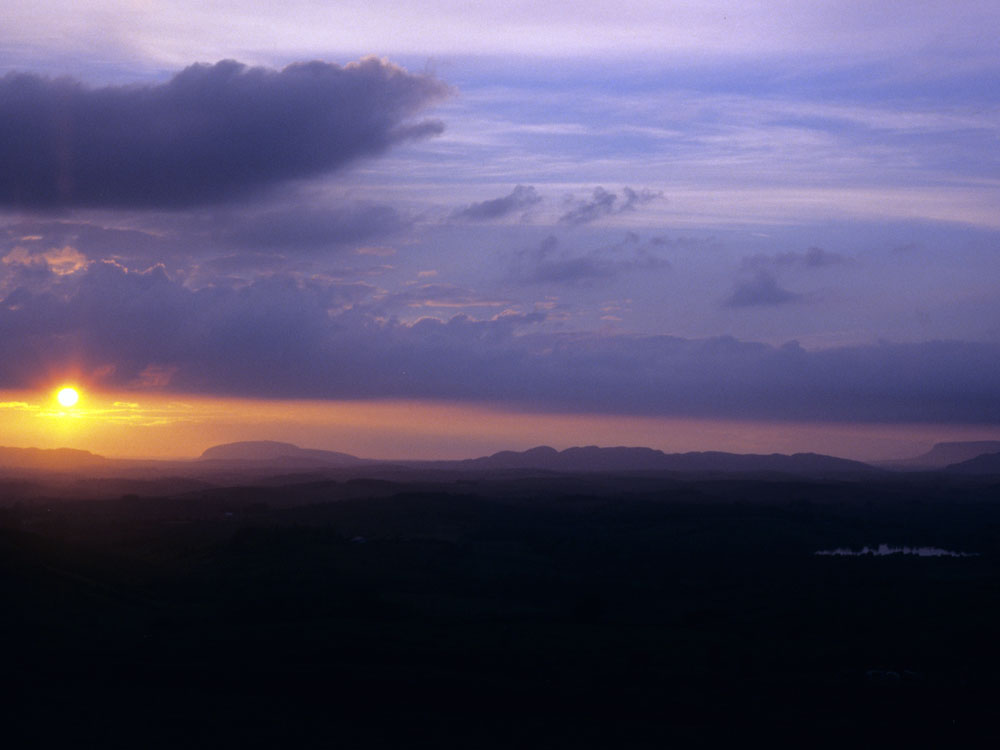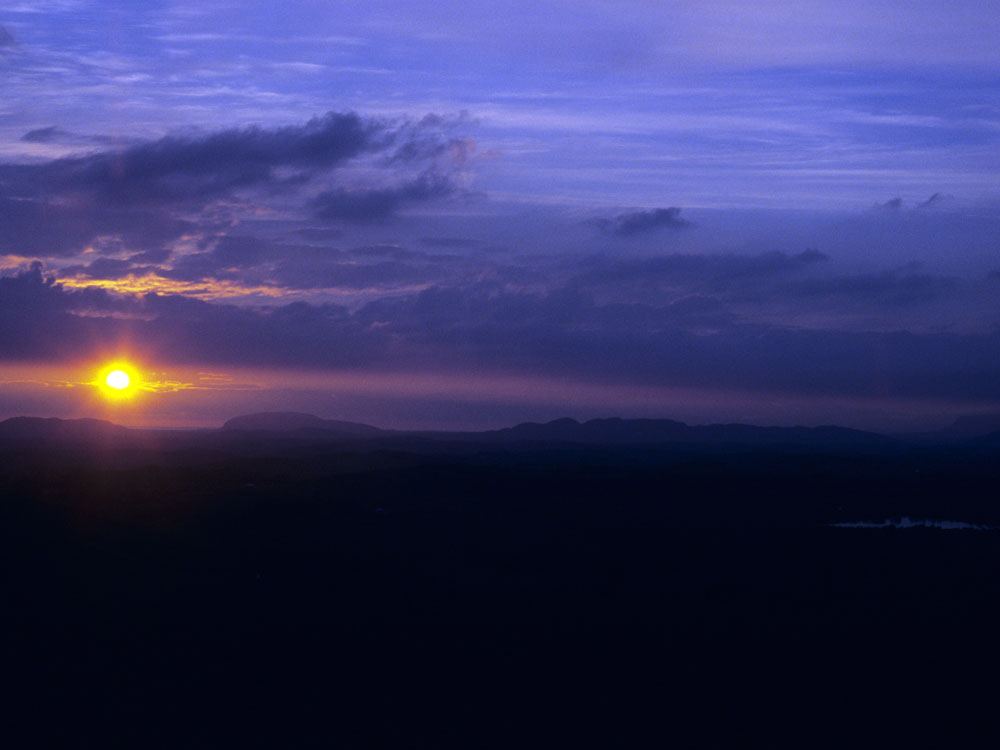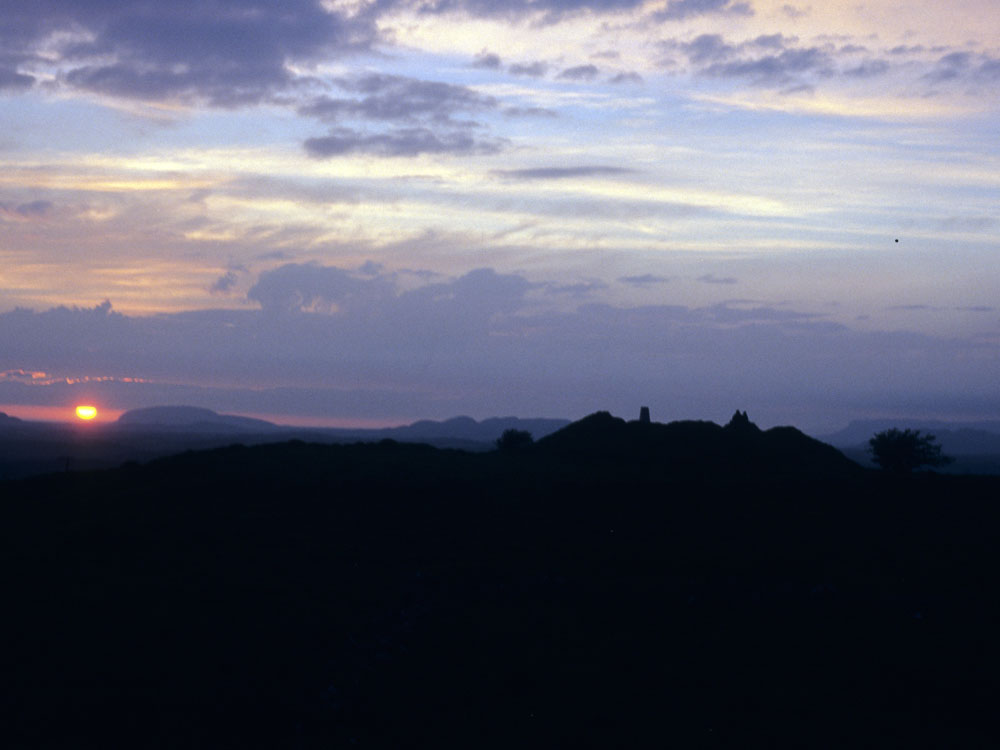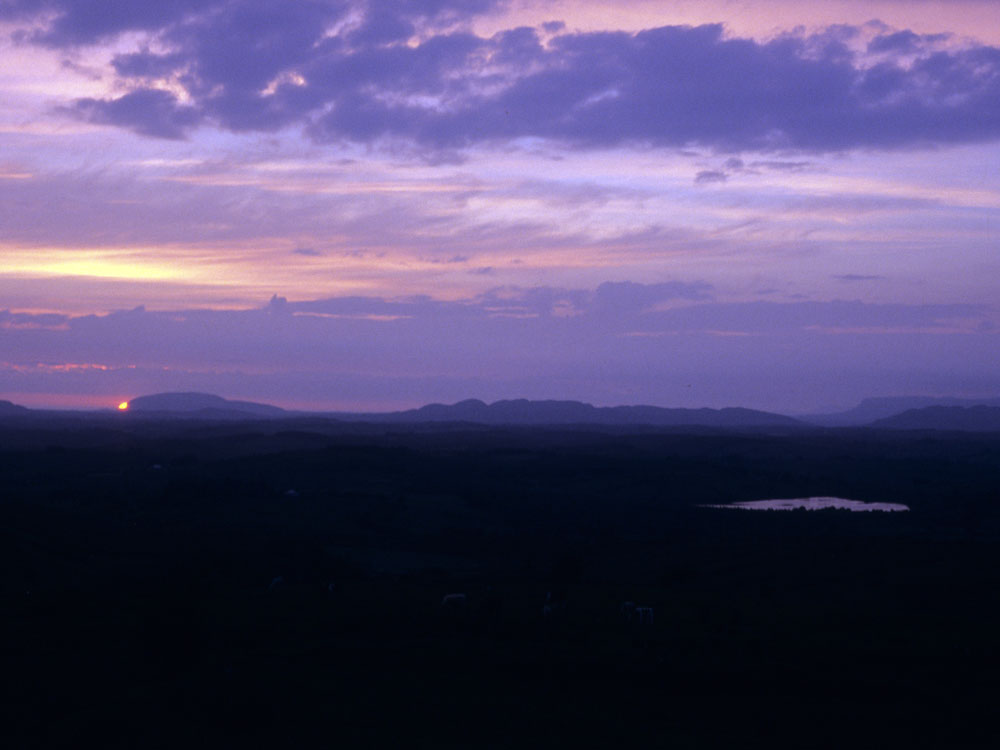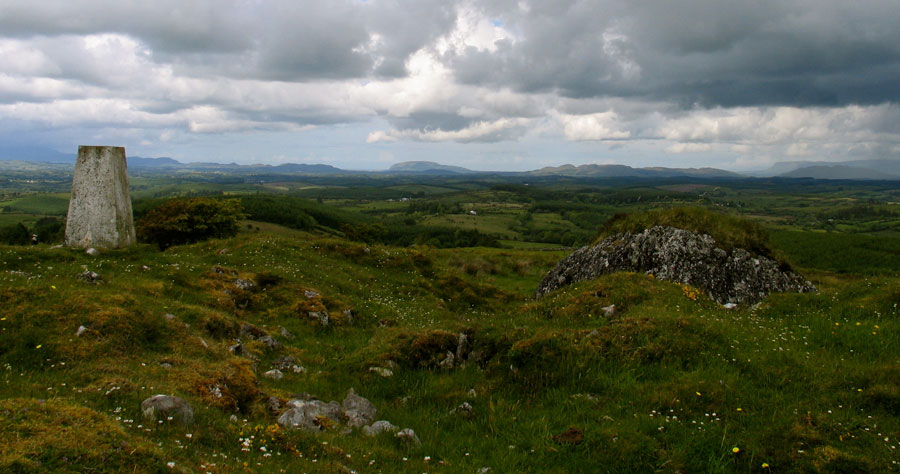Shee Lugh.
Shee Lugh or Seelewey is the name given to the neolithic mound on the highest part of the ridge called Moytura, looking out across Lough Arrow and Carrowkeel. The cairn has a truly fantastic view across County Sligo, a panorama worthy of the Sun God of the Tuatha Dé Danann.
The monument as it remains today is much disturbed. It was dug by the wife of local landowner, Lady Louisa Tenison, who had antiquarian leanings; she also dug in the Labby Rock further down the hill in her search for the skeleton of Lugh of the Long Arm.
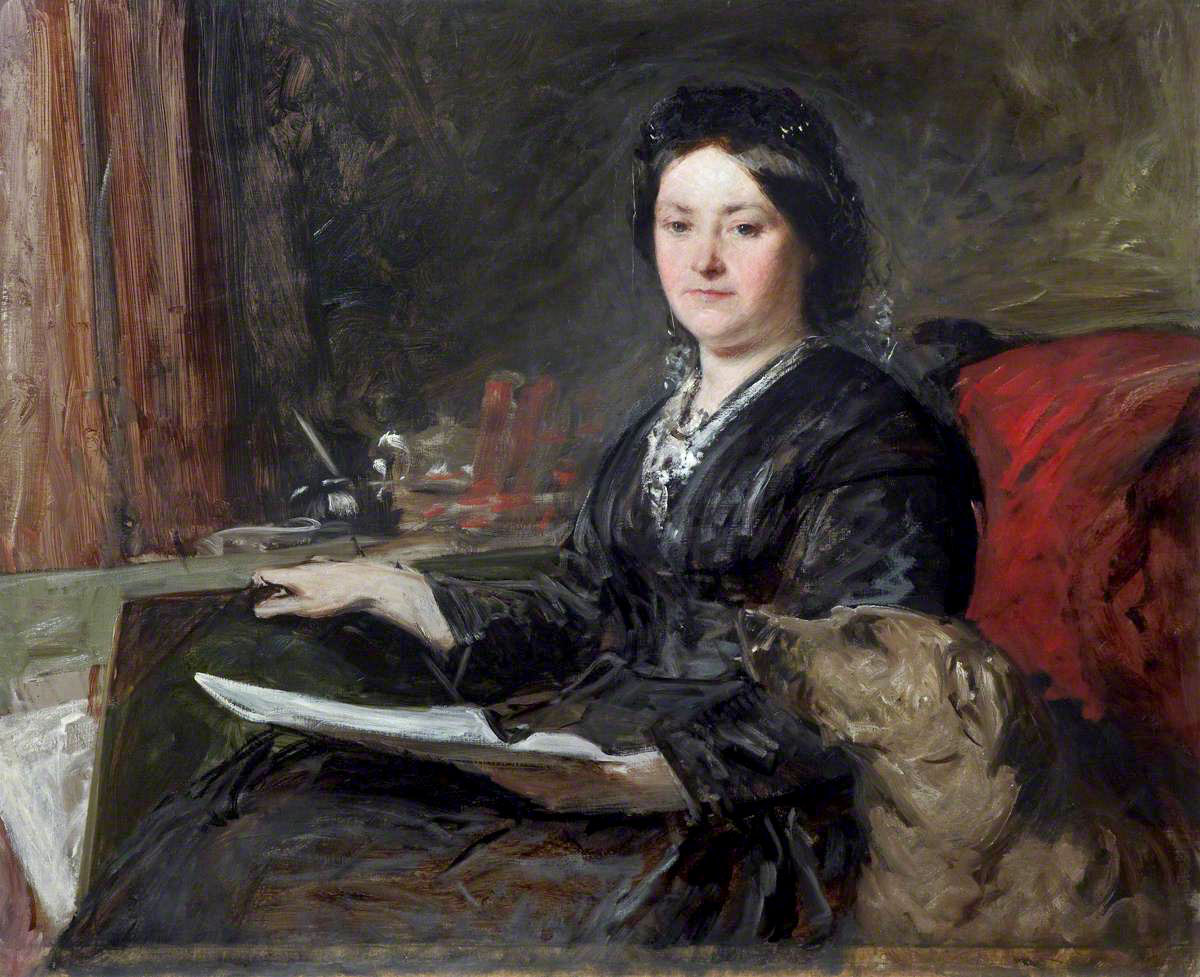
The cairn was built by a massive boulder, which was probably sacred back in the mesolithic dreamtime. The has a trench through it, but no large structural stones are visible. The panorama is astonishing: something like twenty-two ancient monuments can be seen, all marking off points on the horizon. You can see the view here.
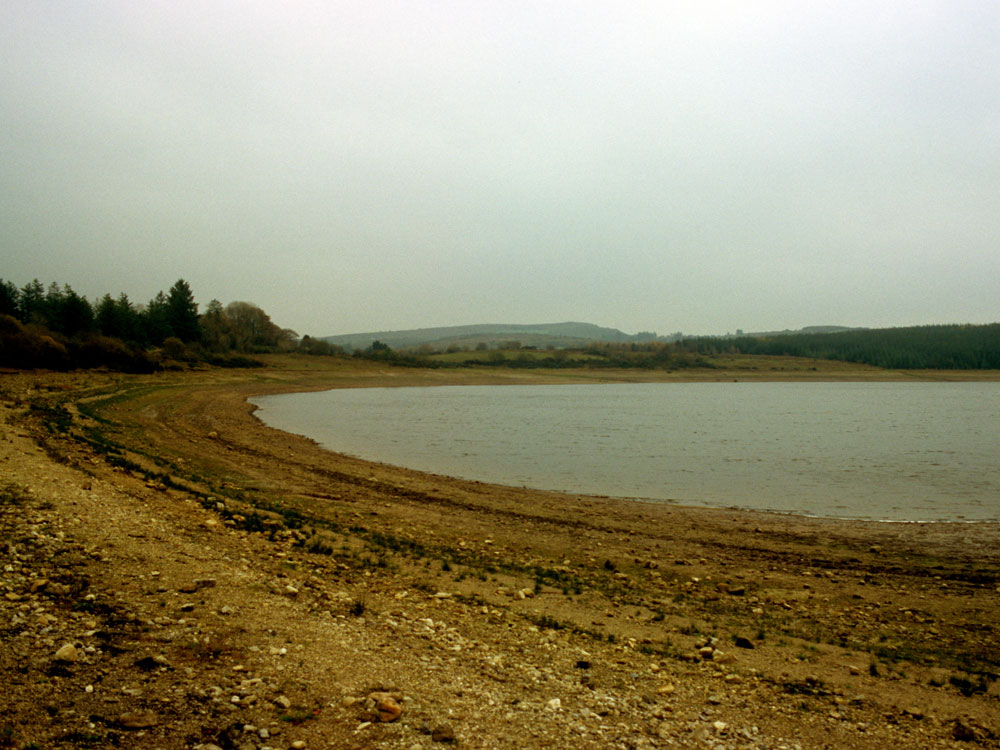
The cairn of Shee Lugh may be one the three major neolithic sites of the Lough Arrow region, the eastern component of a massive compex of megalithic structures. Each of the major cairn complexes is laid out in a trinity of sites. The best known is Newgrange, Knowth and Dowth in the Boyne Valley. At Loughcrew there are Patrickstown Hill, Sliabh na Cailli and Carnbane West.
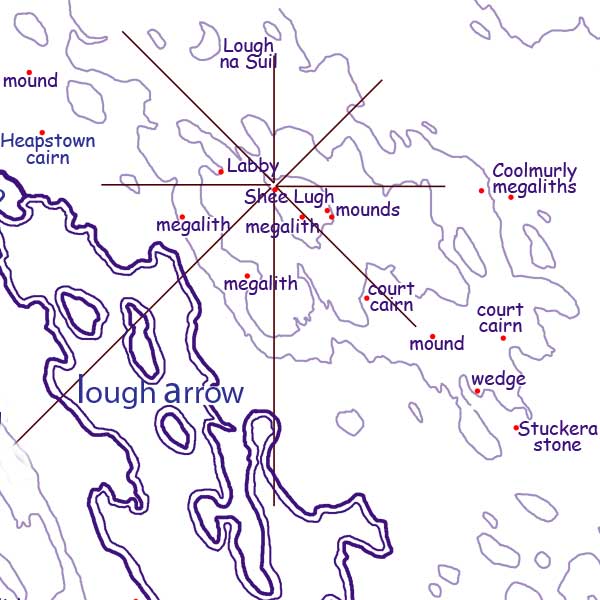
On the west coast near Moytura is the great complex fromed by Carns Hill, Carrowmore and Knocknarea. At Lough Arrow we have Shee Lugh, Heapstown and the Bricklieve Mountain complex, which I count as one site. The Lough Arrow complex is joined to the Cuil Iorra complex by the umbilical cord of the River Uinshin, which connects the lake to the sea at Ballisodare by Knocknarea.
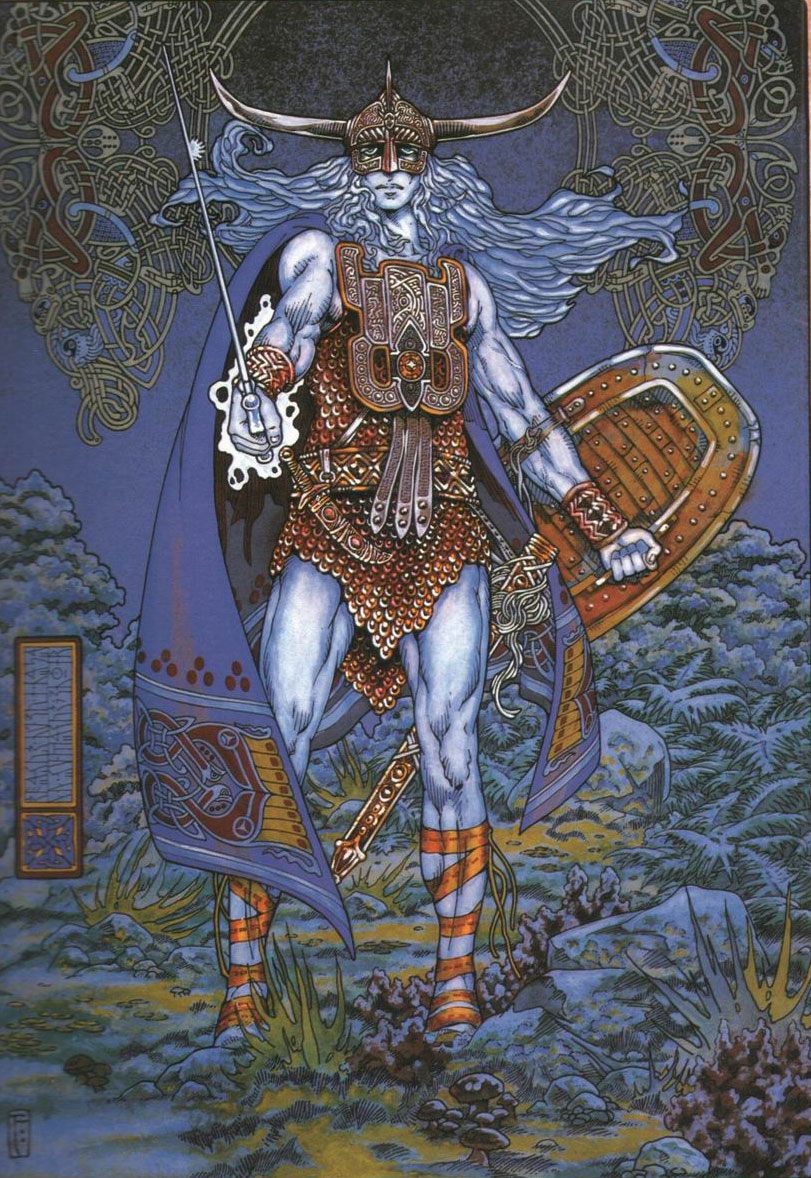
The cairn of Shee Lugh is said to have been Lugh's seat, where he sat as he viewed the events of the Second Battle of Moytura. It is said that the warriors of the Tuatha De Danann were worried that Lugh might be killed or injured during the battle, so they sat him on the mound that bears his name with an honour guard of twenty-seven warriors to protect him.

